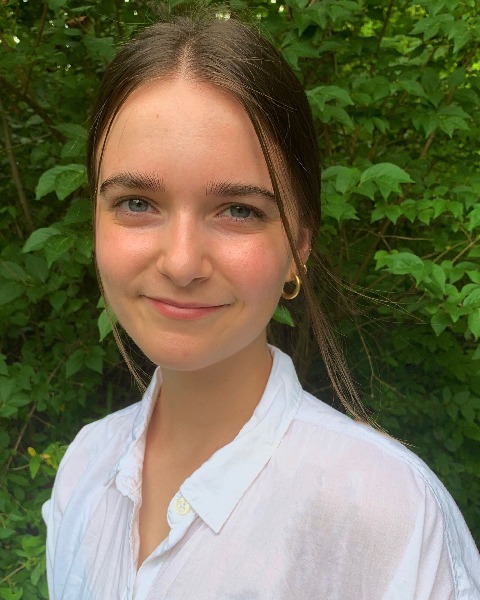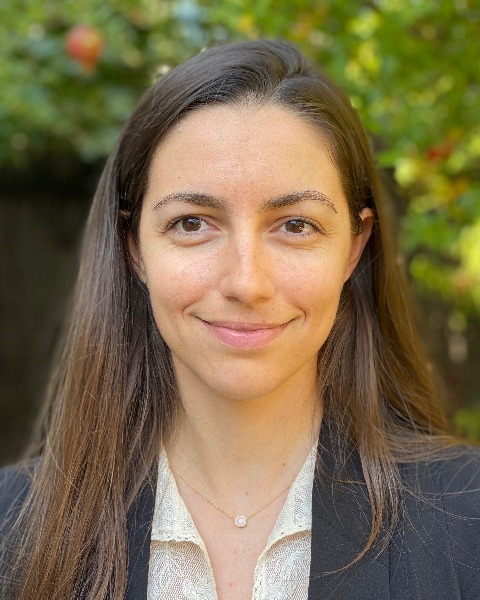Bioinformatics, Computational and Systems Biology
Novel methods for systems biology
Engineering systems for drug synergy prediction using protein-protein interaction networks
Friday, October 13, 2023
8:00 AM - 8:15 AM PDT
Location: 331 (Center, Level 3)

Emily R. Bozich (she/her/hers)
Graduate Student
University of California Los Angeles
Los Angeles, California, United States
Jennifer L. Wilson, PhD (she/her/hers)
Assistant Professor
University of California Los Angeles
Los Angeles, California, United States
Presenting Author(s)
Primary Investigator(s)
Introduction:
Many regard combination therapies as the future for treating cancer, in part due to their improved efficacy (i.e., synergy) compared to monotherapy treatments. While it is widely accepted that complex diseases are caused by concurrent dysregulation of multiple molecular pathways, most FDA-approved combinations are motivated by clinician’s experiences in treating patients rather than through the perspective of combinatorial control of these dysregulated pathways. Additionally, due to the “combinatorial explosion” of potential drug combinations, it is difficult to identify synergistic drug combinations experimentally. Prior work using machine learning methods to predict drug synergy have leveraged monotherapy experimental data such as dose-response curves and molecular data following monotherapy perturbation yet reported correlations of ~0.24-0.481.
Protein interaction network methods have grown tremendously and have successfully identified signaling pathways relevant to multiple diseases. Of the existing network-based drug synergy models, few sufficiently explain pathway effects in order to drive novel combination discovery. Thus, we developed a pipeline to investigate the utility of this data-driven approach in which we aim to uncover the molecular mechanisms behind effective combinations without using experimental training data as model input. Toward this goal, we define drug target neighborhoods and examine the topological and functional relationships between neighborhoods in a combination.
Materials and Methods:
In defining our drug target neighborhoods, we pursued the PageRank Nibble (PRN) method which combines network propagation (PageRank) with a local clustering algorithm (Nibble) in order to find compact neighborhoods surrounding each target. We then determined the topological distance between target neighborhoods using three distinct methods: the average shortest path (ASP) between all proteins in the combination’s neighborhoods and two directional propagation-based metrics. Next, we developed Gene Ontology (GO) biological process clusters in order to explore functional relationships between target neighborhoods. Finally, we compared our network-based distance measurements to a published gene interaction (GI) screen conducted in K562 leukemia cells2.
Results, Conclusions, and Discussions:
First, we found that the PRN-defined target neighborhoods tend to be 23% smaller and 19% more compact than first neighbors-defined neighborhoods. Also, PRN-defined neighborhoods are functionally coherent, as determined through GO biological process enrichment analysis. When measuring the topological relationship between drug combination neighborhoods, we discovered that experimentally synergistic combinations tend to be closer than random target combinations (t-test, P < 10-2) while topologically proximal combinations tend to have weak in vitro interactions. Additionally, we observed the strongest experimental correlation and concordance with one of the directional propagation-based metrics (n = 26, PCC = -0.522, ρ = -0.414, C-index = 0.643). Taken together, this suggests that synergistic combinations benefit from a propagation-based distance within an optimal distance range which may account for the targets’ complementary mechanisms of action. From our GO cluster analysis, we also found that synergistic combinations have significantly greater functional overlap compared to all tested combinations (t-test, P < 10-2). This suggests that effective combinations that fall outside of the optimal distance range can still be synergistic due to convergence on similar biological processes, which may account for additional complementary or anti-counteractive mechanisms of action.
Our efficient data-driven, network-based approach used to predict drug synergy suggests that de novo synergy prediction may be a viable approach for prioritizing synergistic drug combinations or more effectively designing experimental screens that have limited capacity to test combinations. Notably, without using experimental data to train our model, our method is comparable to the most performant machine learning methods for synergy prediction. Future work will include studying the relationship between target combination neighborhoods and dysregulated disease pathways as well as applying our pipeline to a small molecule experimental screen.
References:
Many regard combination therapies as the future for treating cancer, in part due to their improved efficacy (i.e., synergy) compared to monotherapy treatments. While it is widely accepted that complex diseases are caused by concurrent dysregulation of multiple molecular pathways, most FDA-approved combinations are motivated by clinician’s experiences in treating patients rather than through the perspective of combinatorial control of these dysregulated pathways. Additionally, due to the “combinatorial explosion” of potential drug combinations, it is difficult to identify synergistic drug combinations experimentally. Prior work using machine learning methods to predict drug synergy have leveraged monotherapy experimental data such as dose-response curves and molecular data following monotherapy perturbation yet reported correlations of ~0.24-0.481.
Protein interaction network methods have grown tremendously and have successfully identified signaling pathways relevant to multiple diseases. Of the existing network-based drug synergy models, few sufficiently explain pathway effects in order to drive novel combination discovery. Thus, we developed a pipeline to investigate the utility of this data-driven approach in which we aim to uncover the molecular mechanisms behind effective combinations without using experimental training data as model input. Toward this goal, we define drug target neighborhoods and examine the topological and functional relationships between neighborhoods in a combination.
Materials and Methods:
In defining our drug target neighborhoods, we pursued the PageRank Nibble (PRN) method which combines network propagation (PageRank) with a local clustering algorithm (Nibble) in order to find compact neighborhoods surrounding each target. We then determined the topological distance between target neighborhoods using three distinct methods: the average shortest path (ASP) between all proteins in the combination’s neighborhoods and two directional propagation-based metrics. Next, we developed Gene Ontology (GO) biological process clusters in order to explore functional relationships between target neighborhoods. Finally, we compared our network-based distance measurements to a published gene interaction (GI) screen conducted in K562 leukemia cells2.
Results, Conclusions, and Discussions:
First, we found that the PRN-defined target neighborhoods tend to be 23% smaller and 19% more compact than first neighbors-defined neighborhoods. Also, PRN-defined neighborhoods are functionally coherent, as determined through GO biological process enrichment analysis. When measuring the topological relationship between drug combination neighborhoods, we discovered that experimentally synergistic combinations tend to be closer than random target combinations (t-test, P < 10-2) while topologically proximal combinations tend to have weak in vitro interactions. Additionally, we observed the strongest experimental correlation and concordance with one of the directional propagation-based metrics (n = 26, PCC = -0.522, ρ = -0.414, C-index = 0.643). Taken together, this suggests that synergistic combinations benefit from a propagation-based distance within an optimal distance range which may account for the targets’ complementary mechanisms of action. From our GO cluster analysis, we also found that synergistic combinations have significantly greater functional overlap compared to all tested combinations (t-test, P < 10-2). This suggests that effective combinations that fall outside of the optimal distance range can still be synergistic due to convergence on similar biological processes, which may account for additional complementary or anti-counteractive mechanisms of action.
Our efficient data-driven, network-based approach used to predict drug synergy suggests that de novo synergy prediction may be a viable approach for prioritizing synergistic drug combinations or more effectively designing experimental screens that have limited capacity to test combinations. Notably, without using experimental data to train our model, our method is comparable to the most performant machine learning methods for synergy prediction. Future work will include studying the relationship between target combination neighborhoods and dysregulated disease pathways as well as applying our pipeline to a small molecule experimental screen.
References:
- Menden, M. P. et al. Community assessment to advance computational prediction of cancer drug combinations in a pharmacogenomic screen. Nat Commun 10, 2674 (2019).
- Han, K., Jeng, E., Hess, G. et al. Synergistic drug combinations for cancer identified in a CRISPR screen for pairwise genetic interactions. Nat Biotechnol 35, 463–474 (2017).
